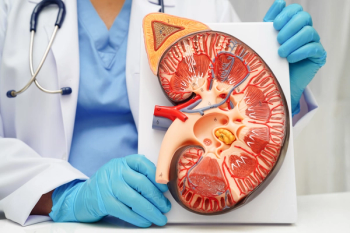
Checkpoint Inhibitor Responses Shown to be Modest, But Better Than Other Oncology Therapies
Study finds the number of patients who are eligible for and may respond to checkpoint inhibitor therapies is higher than for genome-driven therapies.
Because of their durable response rates across malignant tumor types, checkpoint inhibitors have been regarded as highly promising agents in the oncology landscape. In a new study published in JAMA Network Open, the estimated amount of patients who may respond to these drugs was shown to be modest. However, the number of patients who are eligible for and may respond to immunotherapy checkpoint inhibitors is still higher than for oncology drugs in other classes, such as genome-driven therapies.
For the study, the researchers aimed to determine the percentage of US patients with cancer who are eligible for and may respond to FDA-approved checkpoint inhibitor drugs. Currently approved checkpoint inhibitors target the cytotoxic T-lymphocyte-associated protein 4, programmed cell death receptor 1, or programmed cell death ligand 1.
According to the researchers, patients were eligible for checkpoint inhibitors if they had the tumor type and notable inclusion criteria of the drug approval and patient response to therapy was based on the best available response rate for that indication. The study used 6 checkpoint inhibitor drugs approved for 14 indications between 2011 and 2018: ipilimumab, nivolumab, pembrolizumab, atezolizumab, avelumab, and durvalumab.
Based on the data, the estimated percentage of patients in the United States with cancer eligible for checkpoint inhibitor drugs increased from 1.54% in 2011 to an estimated 26.85% in 2018. The indications that contributed most to the eligibility estimate included non-small cell lung cancer (NSCLC) (21.48%), hepatocellular carcinoma (4.95%), and SCLC (3.79%), according to the study.
The estimated percentage of responders to checkpoint inhibitors slowly increased from 201l until 2015, when nivolumab and pembrolizumab were approved for NSCLC. Since then, estimates steadily increased to 12.46% in 2018. As of 2018, the study showed indications that contributed most to the response estimated included NSCLC (7.09%), renal cell carcinoma (1.02%), and melanoma (0.92%).
Overall, the researchers estimated that the proportion of US patients with cancer who could be eligible for these drugs is approximately 44%, if FDA-approved checkpoint inhibitors are universally available. Approximately 13% of these patients would have a response, according to the results.
The researchers noted that although the findings are modest, checkpoint inhibitors showed greater benefit than genome-driven therapies, which were estimated to benefit only 4.9% of patients.
“The results of our analysis suggest that checkpoint inhibitors may at best lead to responses among less than 13% of patients with cancer in the United States,” the researchers wrote in the study. “While the estimated percentage of people who respond to checkpoint inhibitor immunotherapy drugs is small, the benefit may be greater than some other drug classes in oncology owing to reports of durability.”
As more checkpoint inhibitor therapies become approved for more indications, the number of eligible patients is increasing. However, the increase in benefit from these drugs in terms of patient response has slowed.
“One striking observation from the figures presented here is that the overall estimated benefit is driven mainly from NSCLC checkpoint inhibitor drugs, for which the benefit is somewhere around 7% of cancer deaths,” the researchers added. “This finding suggests that large improvements in US cancer statistics may be driven by the drugs that are active in the most common tumor types.”
In conclusion, the researchers emphasized hope that the findings will motivate researchers to develop drugs that benefit an even larger percentage of individuals with cancer.
Reference
Haslam A, Prasad V. Estimation of the Percentage of US Patients With Cancer Who Are Eligible for and Respond to Checkpoint Inhibitor Immunotherapy Drugs. JAMA Network Open. 2019. doi:10.1001/jamanetworkopen.2019.2535
Newsletter
Stay informed on drug updates, treatment guidelines, and pharmacy practice trends—subscribe to Pharmacy Times for weekly clinical insights.
















































































































































































































